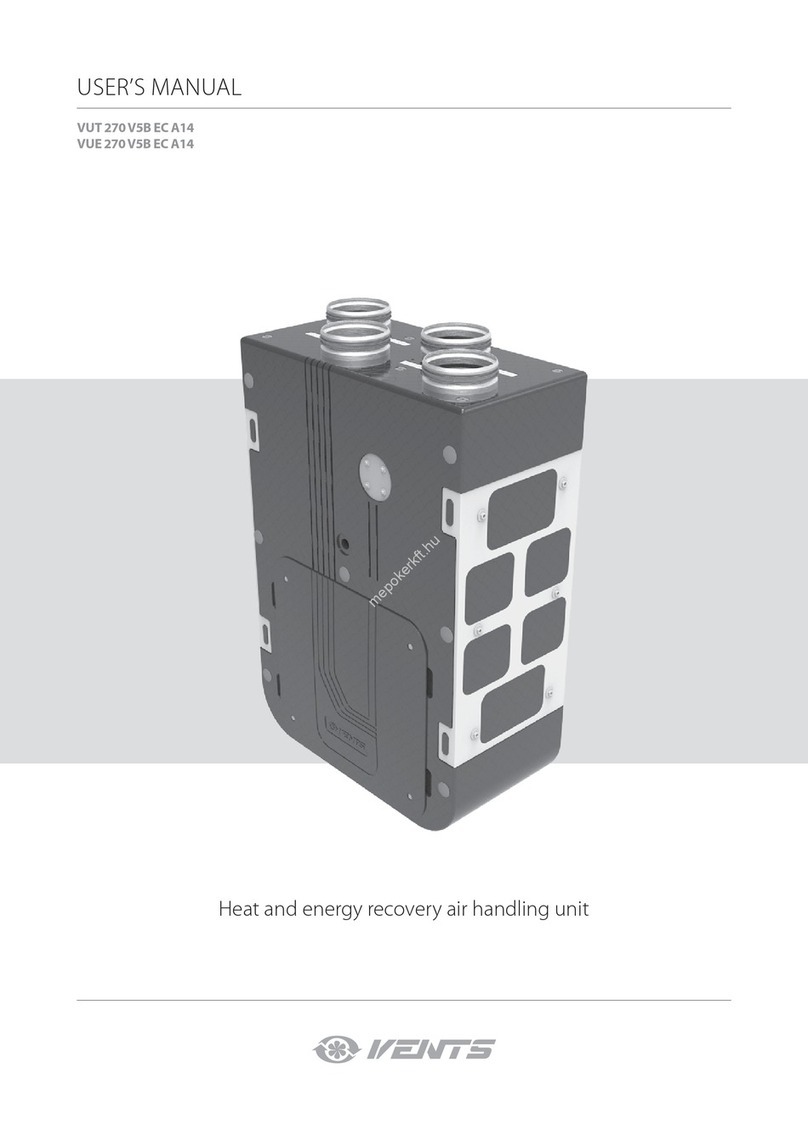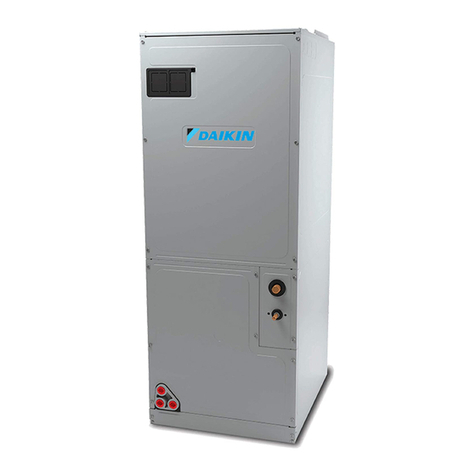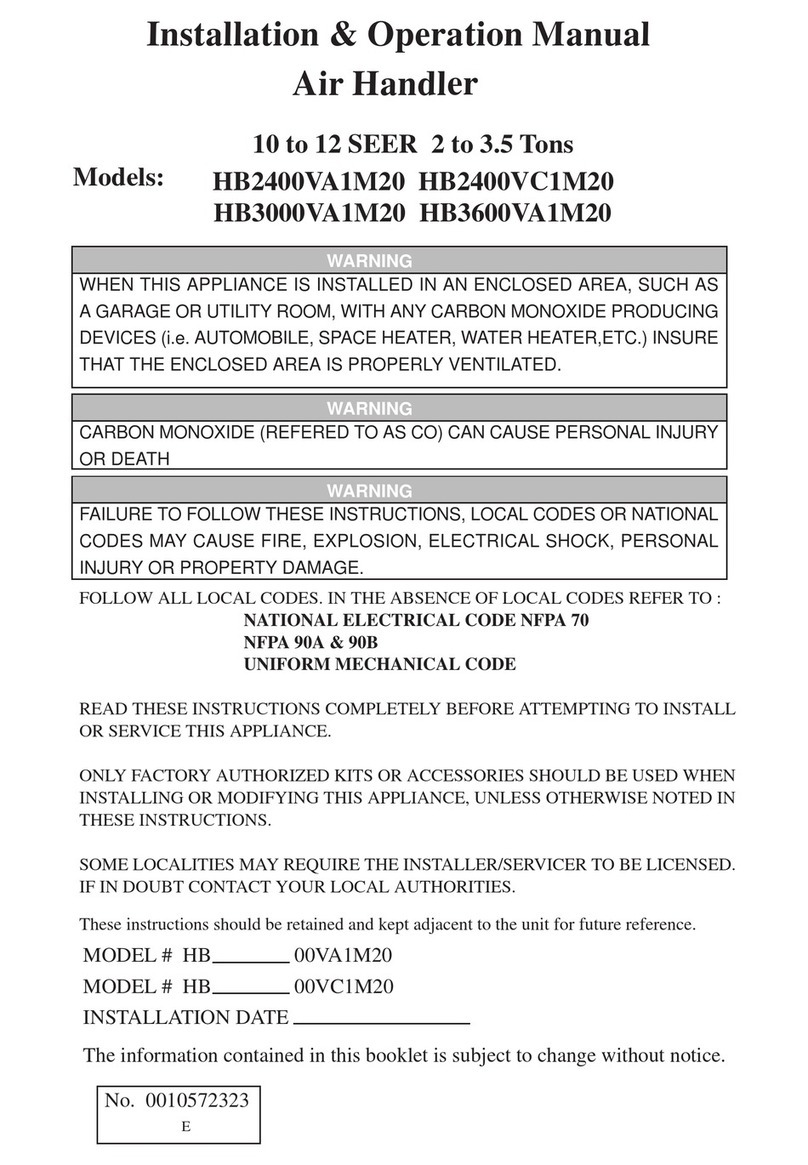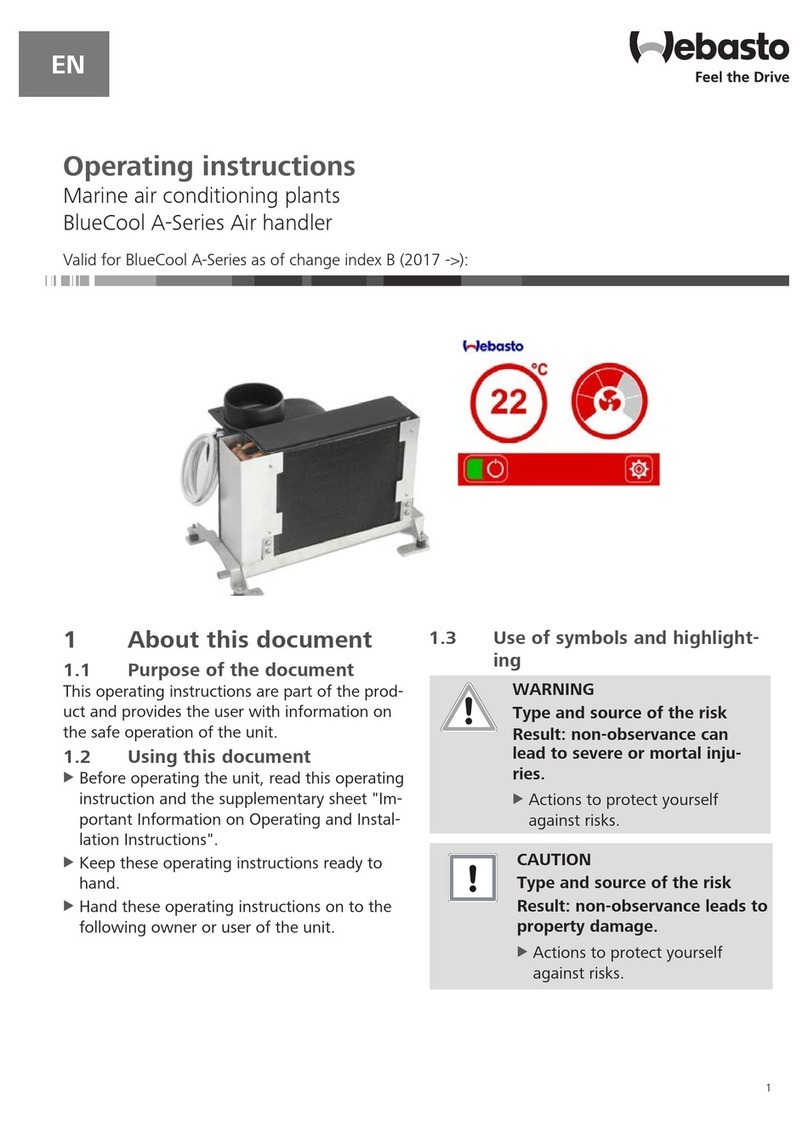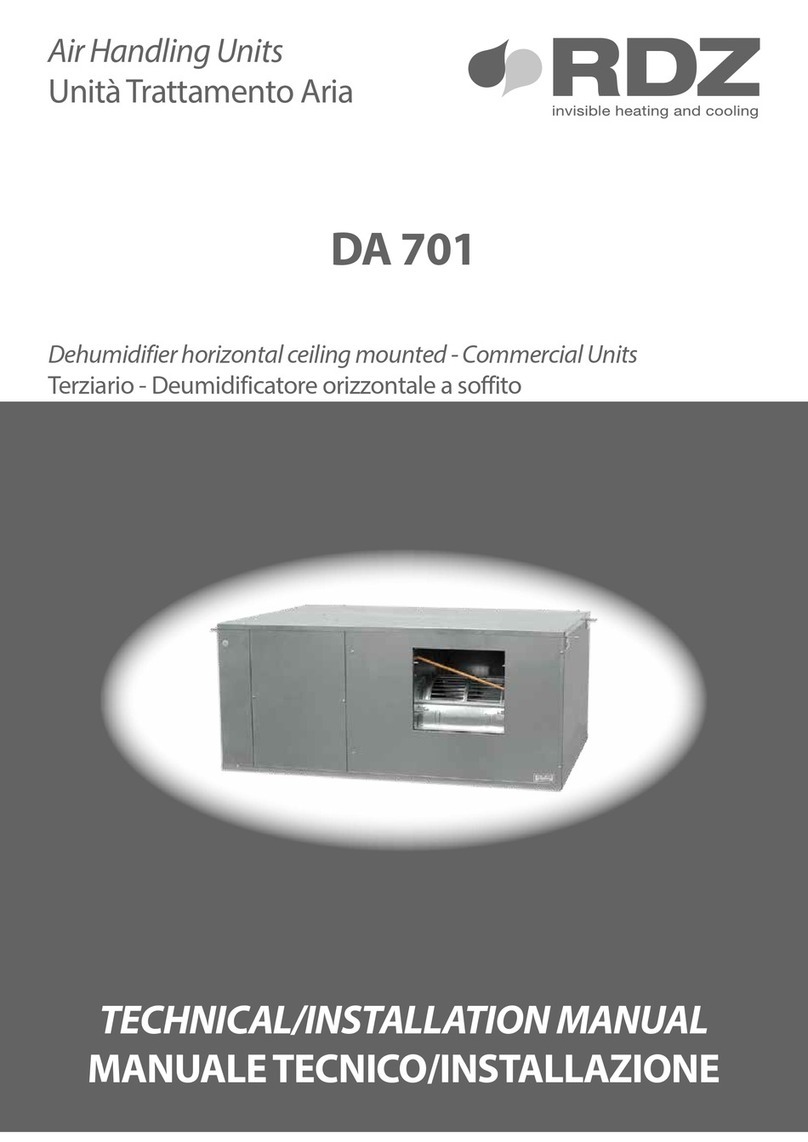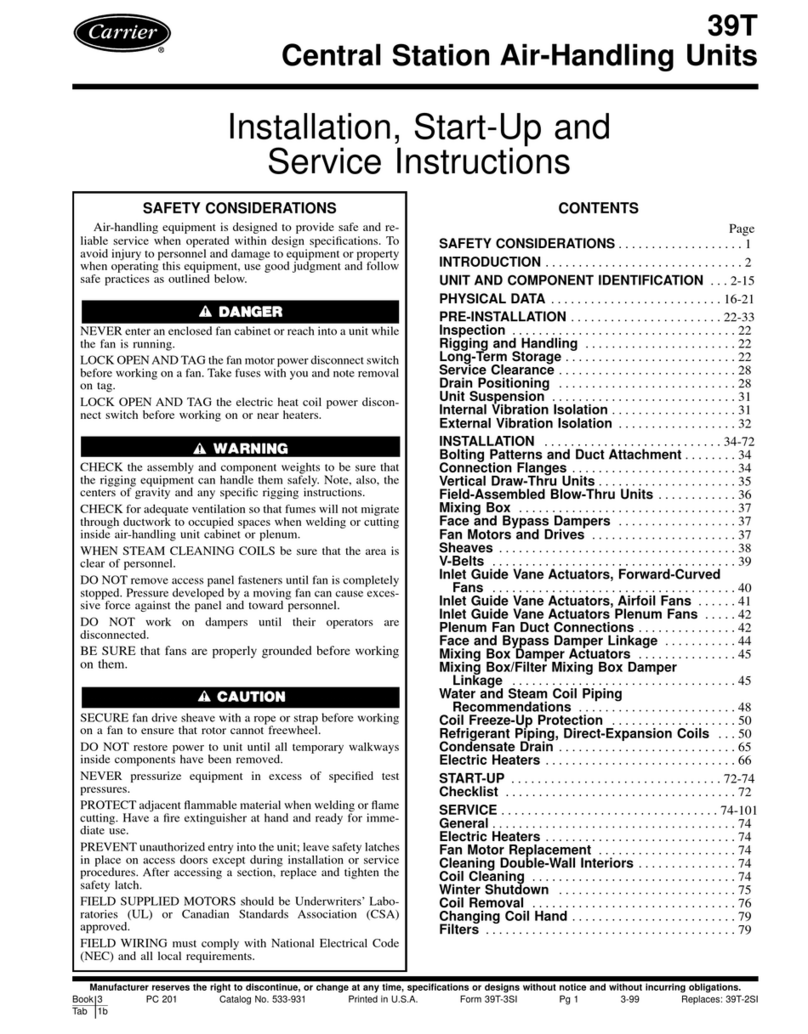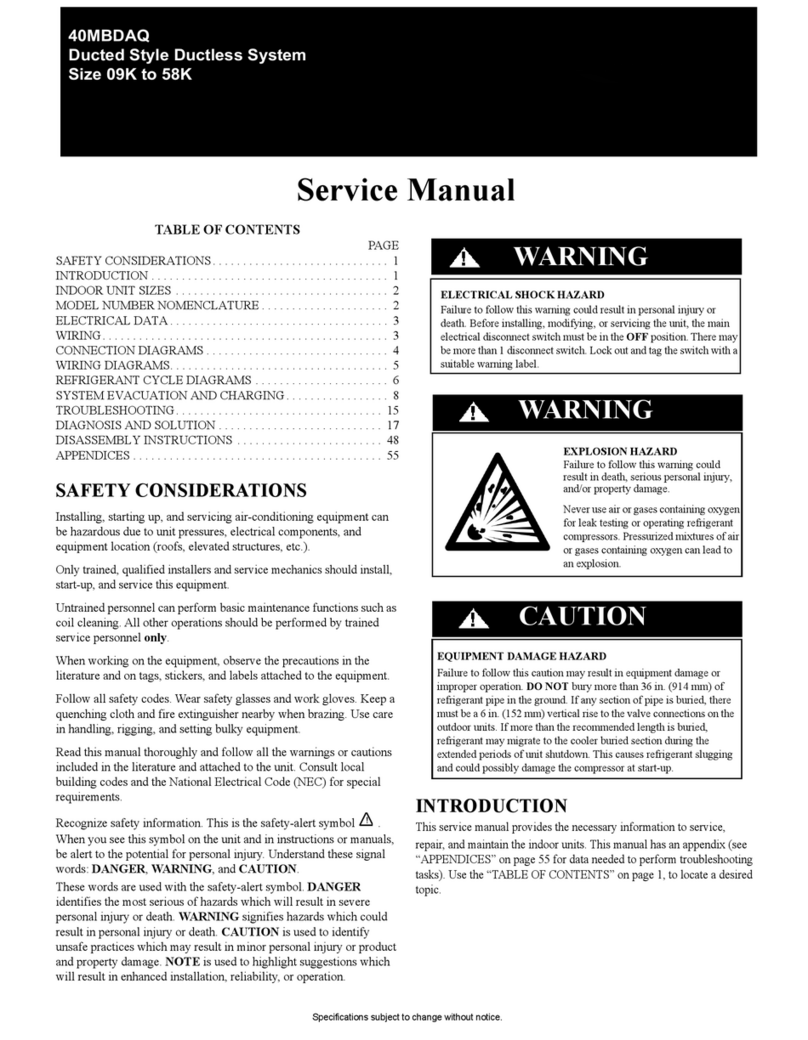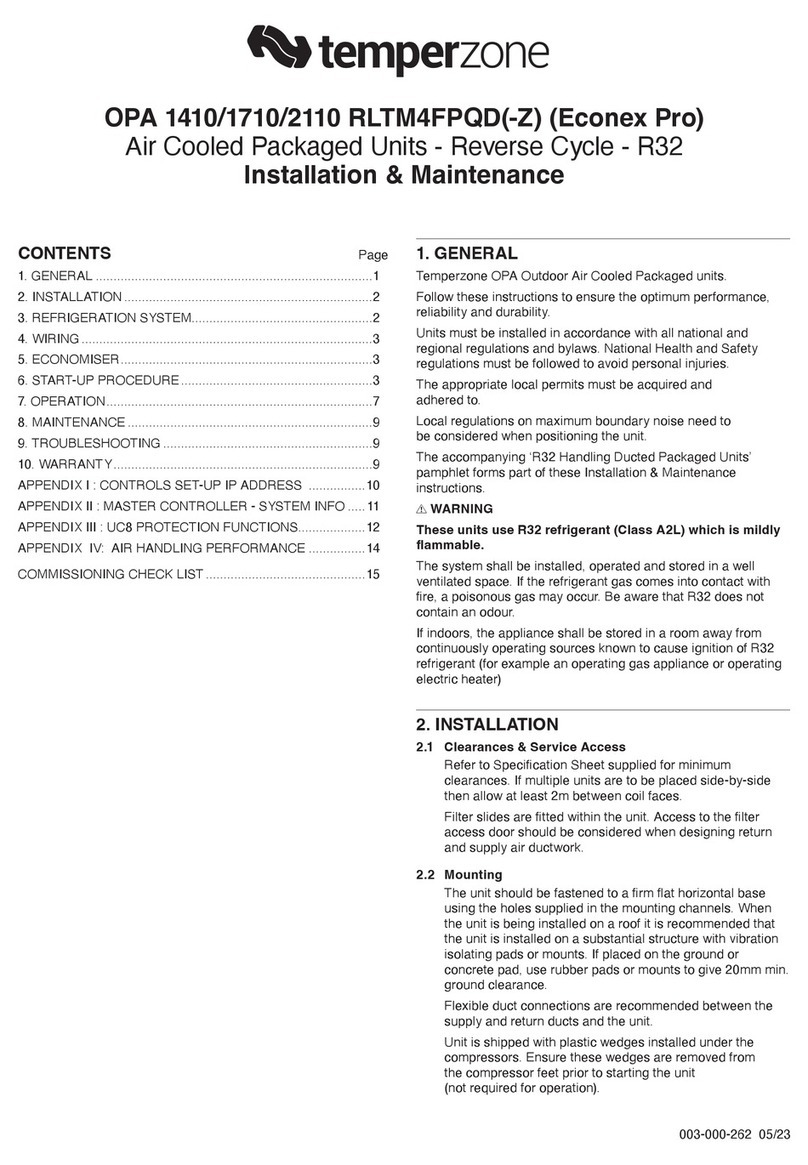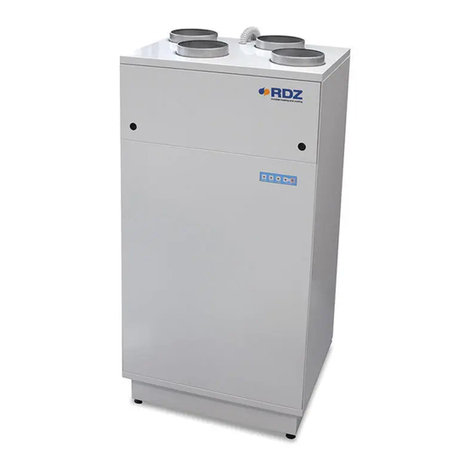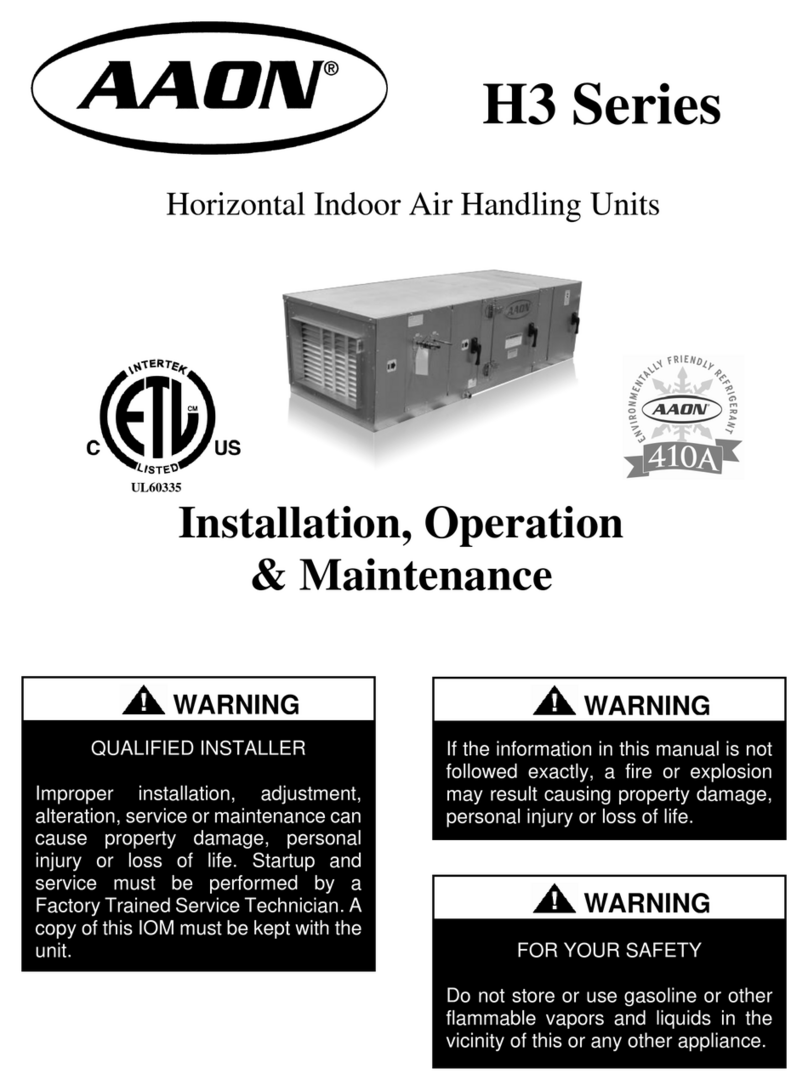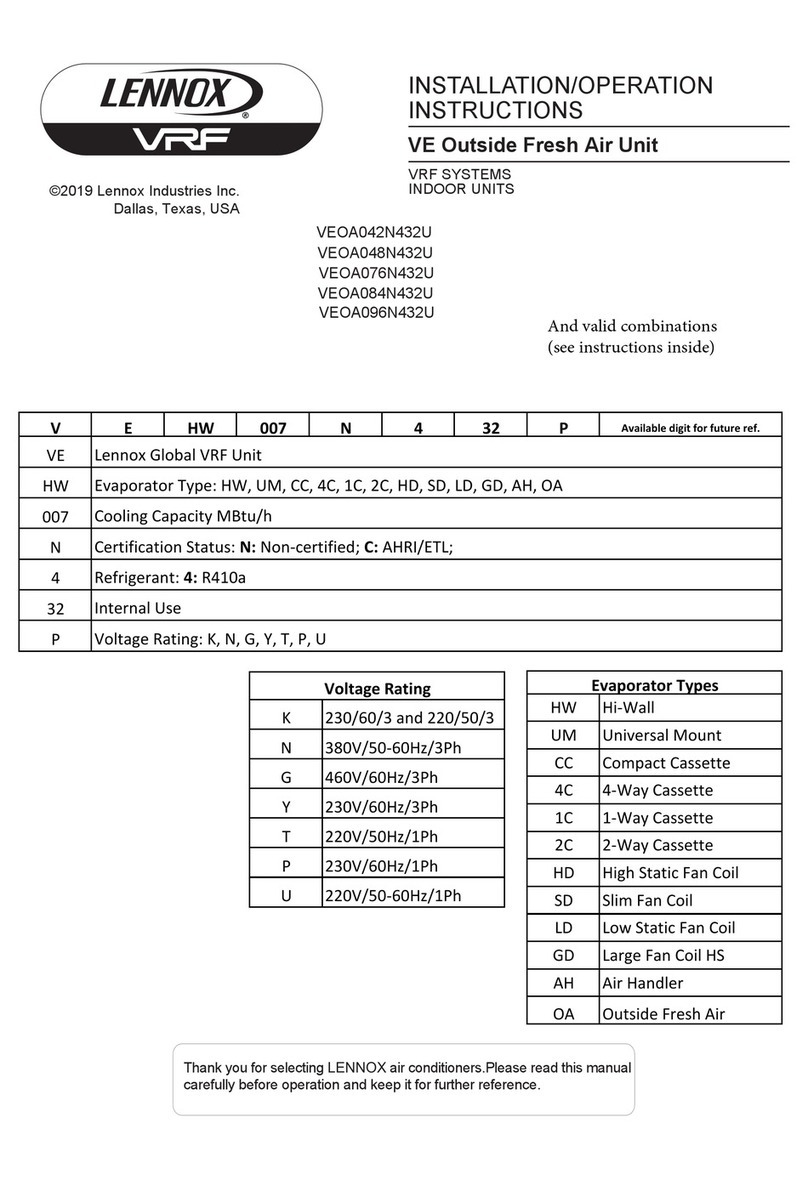
7
DESIGN AND OPERATING LOGIC
The unit has the following operating logic: warm stale extract air from the room flows into the unit, where it is filtered by the extract filter,
then air flows through the heat exchanger and is exhausted outside by the extract fan. Cold fresh air from the outside flows into the unit,
where it is cleaned by the supply filter.
Then the air flows through the heat exchanger and is directed to the room with the supply fan. Heat energy of warm extract air is
transferred to clean intake fresh air from the outside and warms it up. The air flows are fully separated while flowing through the heat
exchanger. Heat recovery minimizes heat losses, which reduces the cost of space heating in the cold season.
UNIT DESIGN
1
2
3
6
7
8
5
4
9
10
11
12
1 — supply fan , 2 — extract filter G4, 3 — heat exchanger , 4 — control unit , 5 — extract fan , 6 — bypass damper (for ATVUT/
ATVUE
180
P5B
EC
models ),
7
—
supply
filter
F7,
8
—
supply
filter
G4,
9
—
Setup
Mode
button
(for
ATVUT/ATVUE
180
P5 B
EC
AT21models ),
10
—
duct
preheater
connector
(for
ATVUT /ATVUE
180
P5B
EC
AT21models ),
11
—
duct
reheater
connector
(for
ATVUT/ATVUE
180
P5B
EC
AT21models),
12
—
cable
glands.
The service side of the unit is equipped with detachable plates fixed by screws for filter cleaning and replacement operations. The control
unit is positioned inside the unit casing. The power cable and grounding cable are connected to the control unit via the cable glands
placed at the side of the unit. The difference between the supply and extract air flow temperature leads to condensate generation.
Condensate is collected in the drain pan and is removed outside through the drain pipes.
Additional equipment for the unit is purchased separately as an accessory
• Humidity sensor (HV2 is connected to the terminal block, HR-S is connected to the controller).
The unit with an installed humidity sensor maintains a set indoor humidity point. As the extract air humidity rises above the set point,
the system automatically switches to the maximum speed. As the humidity drops down below the set point, the unit returns to the
previous mode.
• CO2sensor (connected to the controller).
The sensor is designed for indoor carbon dioxide concentration measurement and respective air capacity regulation through the
control output signal to the fan. Air capacity control based on CO2concentration is an efficient energy saving solution.
• VOC sensor (connected to the controller).
Used for quantification of indoor air saturation with cigarette smoke, exhaled air, vapours of solvents and cleaning agents; for setting
sensitivity with respect to expected maximum air pollution; for local demand controlled ventilation for energy saving as air exchange
takes place only in case of exceeding the set point of air pollution.
• Duct preheater.
The heater maintains air temperature in the supply duct at level that prevents the heat exchanger from freezing. Heater installation
and connection to the unit are described in the heater user’s manual.
• Duct reheater.
The heater maintains the user-defined room air temperature. Heater installation and connection to the unit are described in the
heater user’s manual.
www.air-transfer.nl
